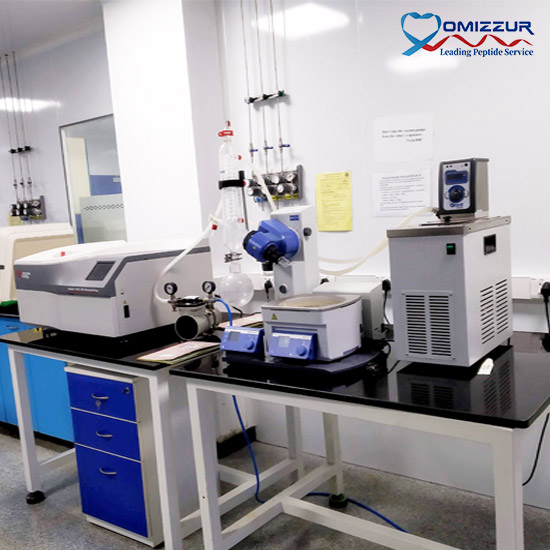Study on C-terminal sequencing of proteins and peptides
The primary structure of a protein determines its advanced structure, which determines its function. Therefore, in order to study protein function, it is necessary to determine its primary structure. To determine the primary structure of a protein, it is generally necessary to determine its molecular weight, isoelectric point, N-terminal sequence, and C-terminal sequence.
At present, the molecular weight determination, isoelectric point determination, and N-terminal sequence determination methods of proteins are very mature, with high sensitivity and accuracy. However, the technology of C-terminal sequencing is not yet mature, which is a bottleneck in the study of protein primary structure and needs further development.
With the deepening of proteomics research, the research on post-translational modification of proteins has increasingly become the focus of scientists. Like phosphorylation and glycosylation, N-terminal and c-terminal cleavage of proteins are also important post-translational modifications that play an important role in protein function. Therefore, studying the N-terminus and c-terminus sequences of proteins is beneficial for revealing their biological functions.
At present, the main method of protein N-terminal sequencing is Edman degradation method. This technology has been very mature and automated, and is widely used in proteomics research. However, the research based on proteomics has rarely measured the c-terminal sequence of proteins, mainly because there is no mature method that can be widely used in proteomics research.
Two dimensional electrophoresis separation combined with mass spectrometry identification is the most widely used method in proteomics research. On the two-dimensional electrophoresis gel map, multiple protein spots are often identified as the same protein, which is caused by different post-translational modifications or shears, of which the C-terminal shear is an important form of shearing.
Therefore, the establishment of a method that can study the C-terminal sequencing of proteins based on gel separation is of great significance to clarify the primary structure and biological functions of proteins, and also has a great role in promoting the development of proteomics.
The main methods for protein C-terminus sequencing include carboxypeptidase method, chemical method, and tandem mass spectrometry. Each method has certain limitations. With the continuous development of mass spectrometry technology, the application of carboxypeptidase method and tandem mass spectrometry is becoming increasingly widespread.

Mass spectrometry is not only an important detection tool for carboxypeptidase methods, but also an important detection tool for chemical and perfluoric anhydride methods. The C-terminus sequence of proteins can be determined using only the most commonly used trypsin digestion combined with tandem mass spectrometry, without the need for carboxylpeptidase digestion and chemical cleavage specifically designed for C-terminus analysis.
Tandem mass spectrometry (MS/MS) refers to a mass spectrometer that can perform multi-stage mass spectrometry analysis. Most multi-stage mass analyzers in tandem mass spectrometry are physically connected (i.e., spatially connected), such as three-level quadrupole mass analyzers, quadrupole time of flight mass analyzers, quadrupole ion hydrazine mass analyzers, quadrupole Fourier transform mass analyzers, time of flight mass analyzers, etc. Some mass spectrometers, such as ion traps and Fourier transform analyzers, are series mass spectrometers that integrate primary and secondary analyzers with collision chambers. They can even perform (MS) level series analysis, which is a time series analysis. In general, the first level mass analyzer plays a role in selecting ions, while the second level mass analyzer plays a true role in mass separation.
The tandem mass spectrometry can directly analyze the mixture and select a certain mass number of ions from the first stage mass analyzer as needed to enter the collision cell for collision induced dissociation, and then detect the fragmentation fragments after separation by the secondary mass spectrometry. When peptide ions are dissociated by inert gas collision in the collision chamber, they are prone to break along the peptide chain at the amide bond to produce b and Y ions, as well as a series of other ions. These fragment ions are separated and detected by a second level mass analyzer, and the sequence information of the peptide can be obtained based on the mass difference between the peptide ions and each fragment ion.
The principle of tandem mass spectrometry for determining the c-terminus sequence of proteins is to cut the protein by trypsin or other enzymes, directly determine the peptide mixture by tandem mass spectrometry, and then select the c-terminus peptide ions through primary mass spectrometry for tandem mass spectrometry analysis to obtain the c-terminus sequence. The key to determining the c-terminus sequence of proteins using tandem mass spectrometry is the identification of c-terminus peptide segments. For proteins with known sequences, the theoretical molecular weight of the c-terminal peptide segment can be calculated based on the sequence and cleavage site. For proteins with unknown sequences, the determination of the c-terminal peptide segment can be done using the O Pu labeling method and the Anhydrotrypsin method.
In order to adapt to the development of proteomics and protein chemistry, many new protein c-terminal sequencing methods have been established, and the sensitivity and repeatability have also been greatly improved. However, these methods are not yet very mature, have not achieved automation and commercialization, and all have certain defects. Therefore, there is currently no practical, sensitive, and easy to operate method for protein c-terminal sequencing.
Different methods need to be selected for C-terminal sequence analysis based on different purposes and protein properties. With the development of proteomics, the requirements for the preciseness and coverage of data will continue to improve, and the significance of protein c-terminal sequencing will become more significant. Therefore, it is of great significance to establish a protein c-terminal sequencing method that has a wide practical range and is easy to operate.
Article from Omizzur biotech - a biotech company focus on custom peptide synthesis
Read Related Articles:
Copyright © 2020 Omizzur Inc | Terms & Conditions | Privacy Notice | Sitemap